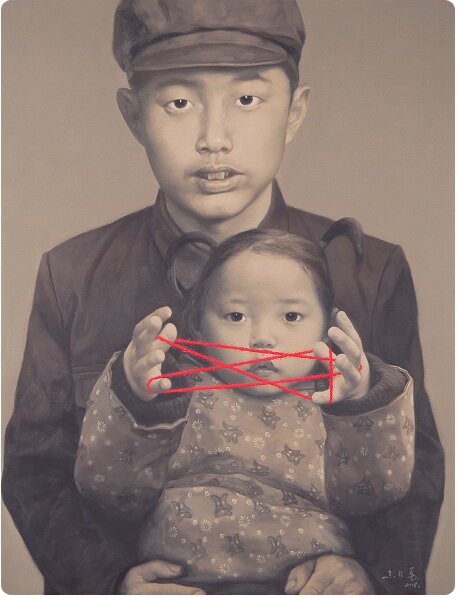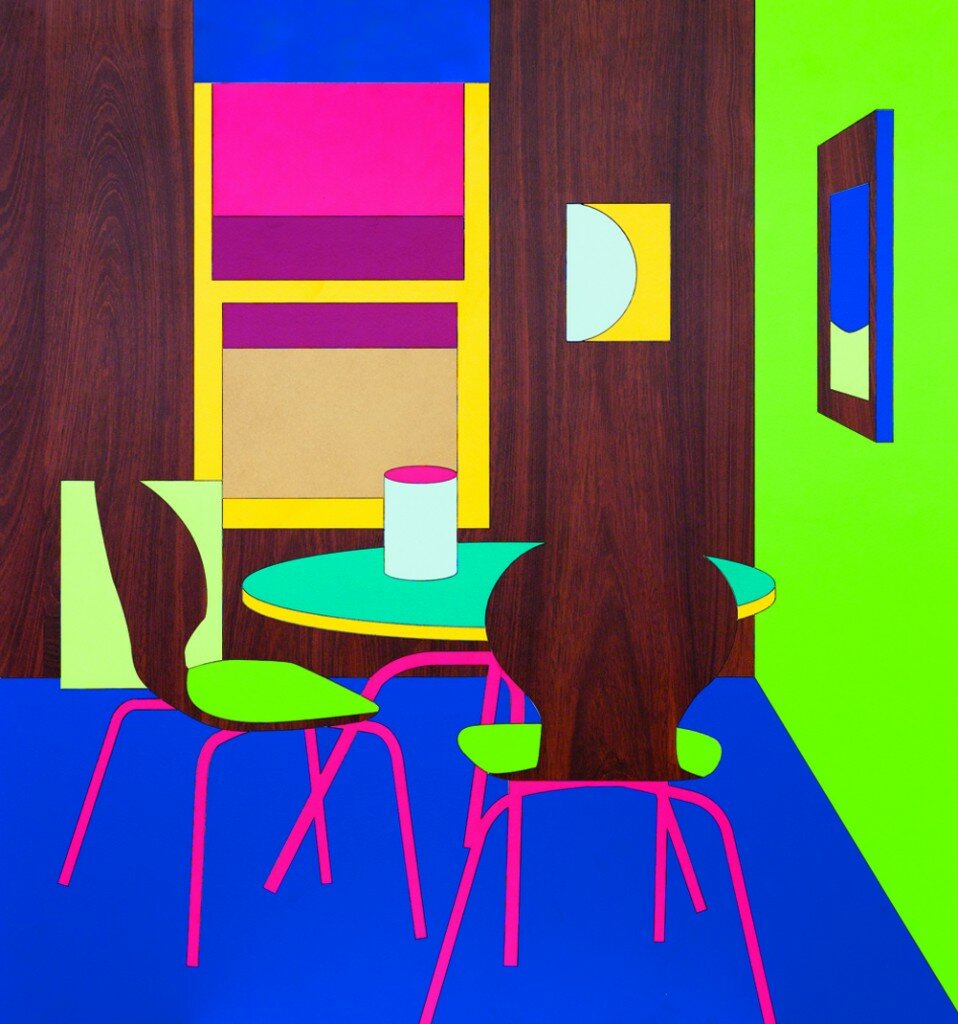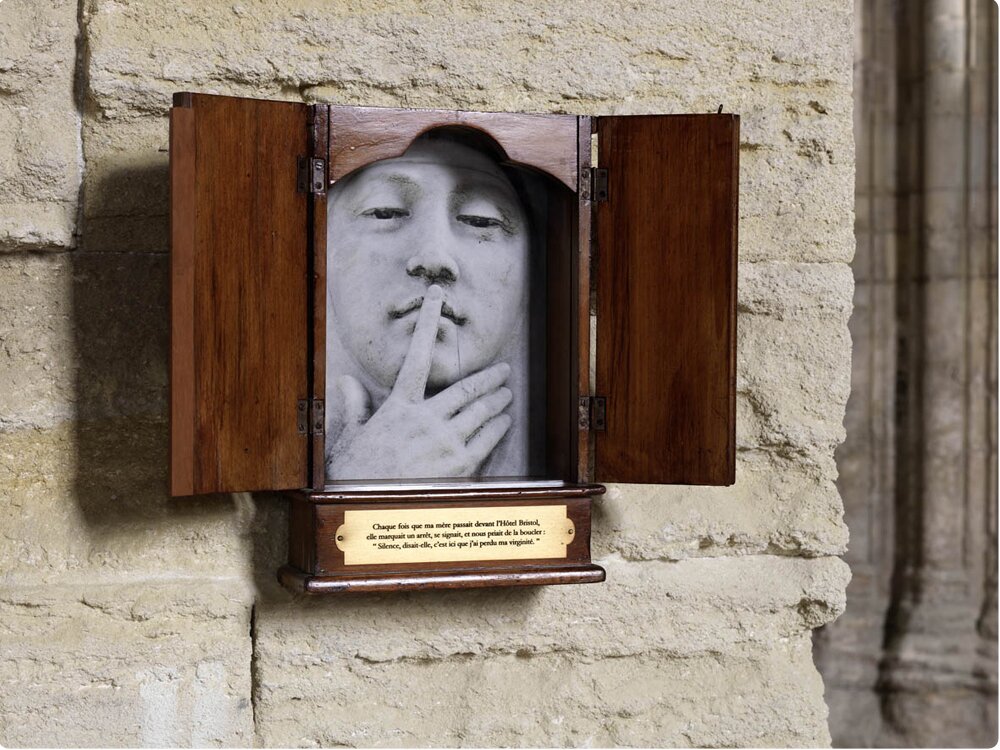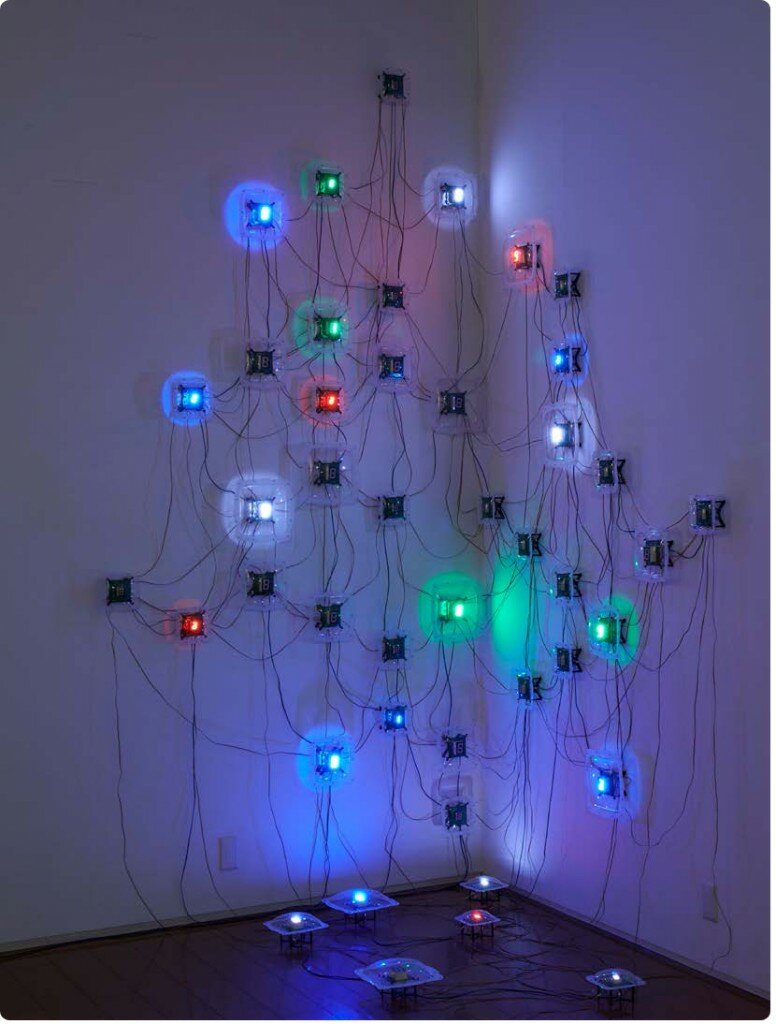 Wu Yongping, Childhood Memory: A New Wide World – I was 5 years old in 1972, 2008 (Oil on canvas) Image: Courtesy of MAD Museum of Art & Design
Wu Yongping, Childhood Memory: A New Wide World – I was 5 years old in 1972, 2008 (Oil on canvas) Image: Courtesy of MAD Museum of Art & Design
The Art Stage Singapore is Asia’s foremost contemporary art fair, this January they presented hand-picked galleries from Asian and Western countries that complement each other. Art Stage Singapore promotes dialogue not only between Asia and the West but amongst the countries of the Asian region as well. Here are some of our favourite pieces from the fair.
Wu Yongping, MAD Museum of Art & Design
Wu has a honed ability to reinvent and remix classical art methods and techniques with modern thought to produce pieces that provoke and scintillate with shades, texture, style and social context. Wu meticulously analyses age-old artisan tecnhiqes and mateials such as ceramics or laquer and produces a new artistic language out of them via new applications. His oil paintings focus on the person as a collective symbol of the human spirit. This series A New Wide World reveals and extraordinary and novel approach through texturing Chinese paintng with sketch strokes of Western oil painting. The effect is both visually and psychologically intriguing as different layers reveal different perspectives to the relief-sculpture-like lines to the linen canvas.
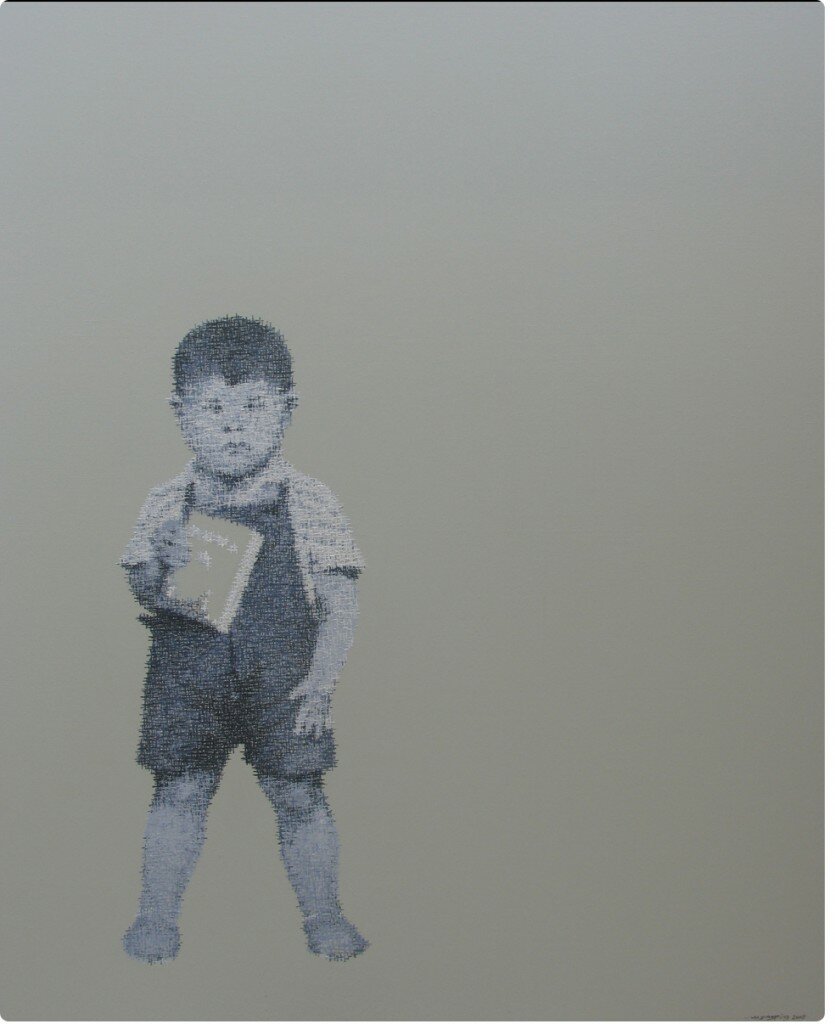
Wu Yongping, Childhood Memory: A New Wide World – I was 5 years old in 1972, 2008 (Oil on canvas) Image: Courtesy of MAD Museum of Art & Design
Zhu Yiyong, Galerie du Monde
In his series of work entitled ‘Memories’, Zhu has portrayed people from different social classes, ranging from schoolyard children, peasants, cosmopolitan beauties to working labourers, employing the motif of the children’s game Cat’s Cradle that is a recollection of China’s most famous symbol in the History of the Revolution to reminisce on the non-materialistic memories that had gradually faded from people’s field of vision. Using the Cat’s Cradle motif to reflect the psychological status of people in the society of time, the emotionally provocative ‘five-pointed star’ has awakened people’s memories in the pursuit of purity and sublimity of the bygone era.
Joanna Lamb, Sullivan+Strumpf
Joanna Lamb depicts spaces of sub/urbanity as “an ongoing exploration of the idea of home”. Generic domestic interiors and suburban sites such as homes, highways and airports are reduced to flat blocks of colour divested of linear perspective and often repeated in tonal variations. This reduction and repetition draws from the symmetric perfection of real estate advertisements and points to the aesthetic monotony of the suburban landscape. An uncanny anonymity issues from Lamb’s purification of colour, dimensionality and form as everyday environments seem at once familiar and unfamiliar. Moreover, the surface of the works, seemingly untouched by the artist’s hand, effuses a clinical objectivity that is mirrored in the empty, unpeopled scenes. As a result the works omit a feeling of disconnectedness, impartial to the inclusion of human interaction.
Sophie Calle, Arndt
Sophie Calle explores her own psychological and emotional terrain in multimedia works, probing ideas of control, freedom, gender, intimacy, and distance in human relationships.
Tatsuo Miyajima, Lisson Gallery
Instead of a collection of randomised counting circuits, these networks or clusters of flashing digits come together to create intelligent, ‘living’ organisms, which Miyajima calls Corps Sans Organes after Antonin Artaud’s term for an ideal, virtual body that could function independently from the interconnectivity of its constituent parts. The earlier series Counter Fragile Lifestructurism is a reflection on the becoming of life. Each human being is constituted by over 60 billion cells, testifying at every moment the miracle of living. Each LED panel, with its individual flashing element counting in reverse from the digit 9 to 1, represents one cell. As the numbers progressively count down and start anew, borrowing from Buddhist-infused philosophies about time and contemplation, while reflecting the cycle of life through the progression from 1 to 9.
Nikki Luna, Equator Art Projects
Her exhibited work, Survival of the Prettiest, is a humourous spin on the evolutionary process, gender awareness, roles and biases and explores the notion of beauty as a weapon of war in the fight for survival. Here, antlers are symbolic of sexual selection, dominance and aggression. They are proudly displayed by male deer to attract does during the mating season and to ward off other potential suitors. The periodic shedding of antlers encapsulates this notion of re-generation, mirroring human vanity and our obsession for aesthetic perfection. Cosmetic surgery is the key to our constant need to re-invent ourselves, pandering to the whim of a highly fickle consumer driven culture. Women are the normal focus of this pressure of beauty.
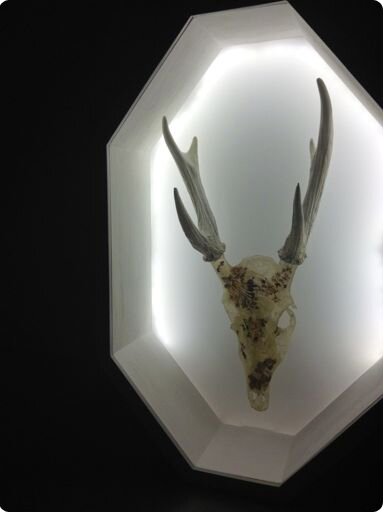
Nikki Luna, Survival of the Prettiest, 2013 (Lightbox installation of Philippine deer antlers with floral fabric and resin) Image: Courtesy of Equator Art Projects
 LIVE FEEDS
LIVE FEEDS
